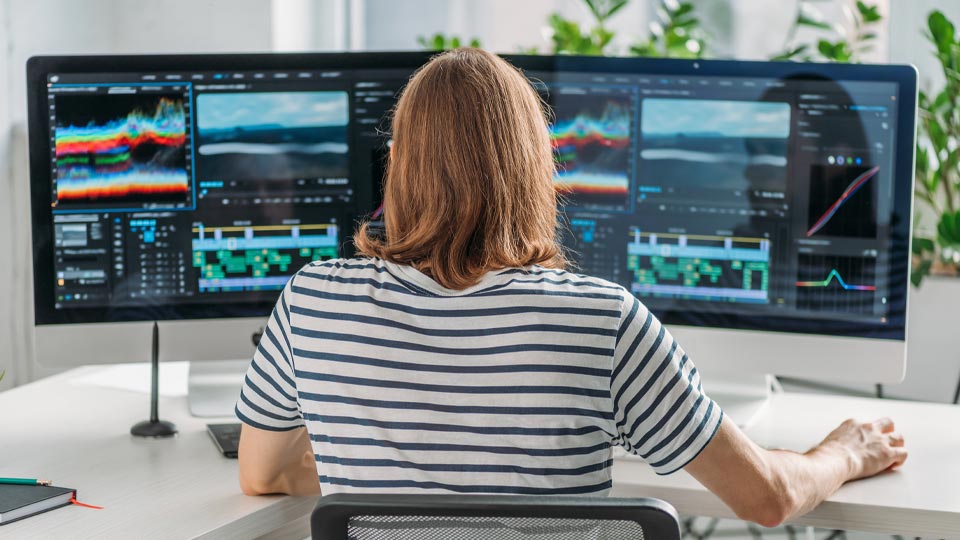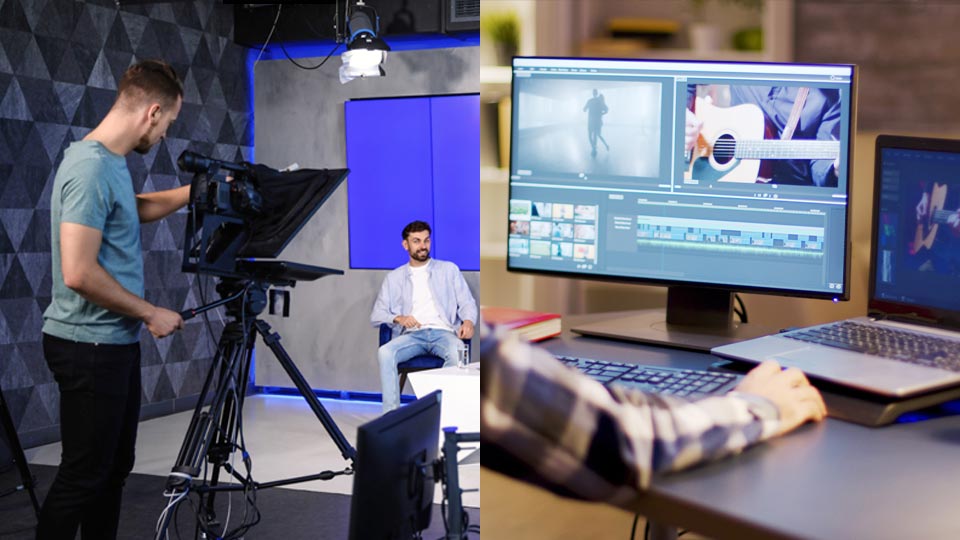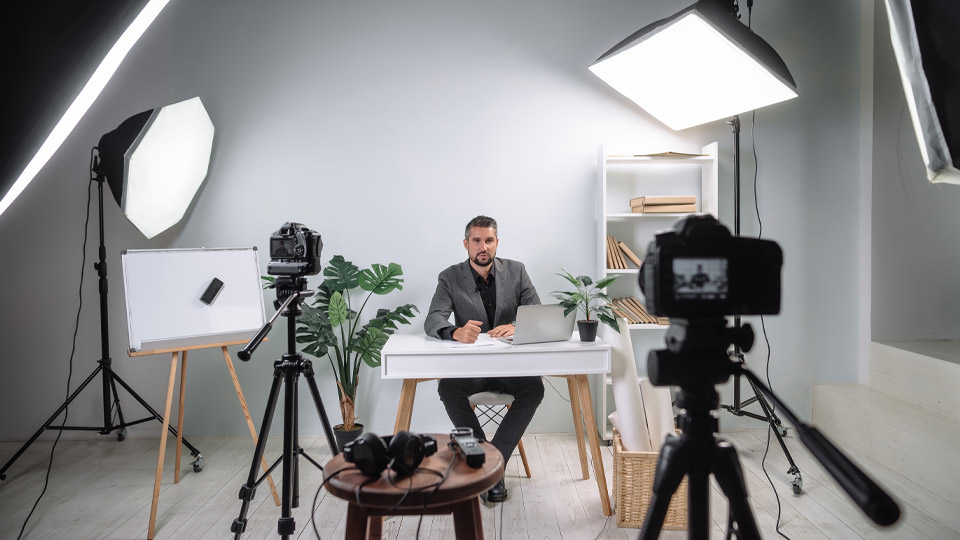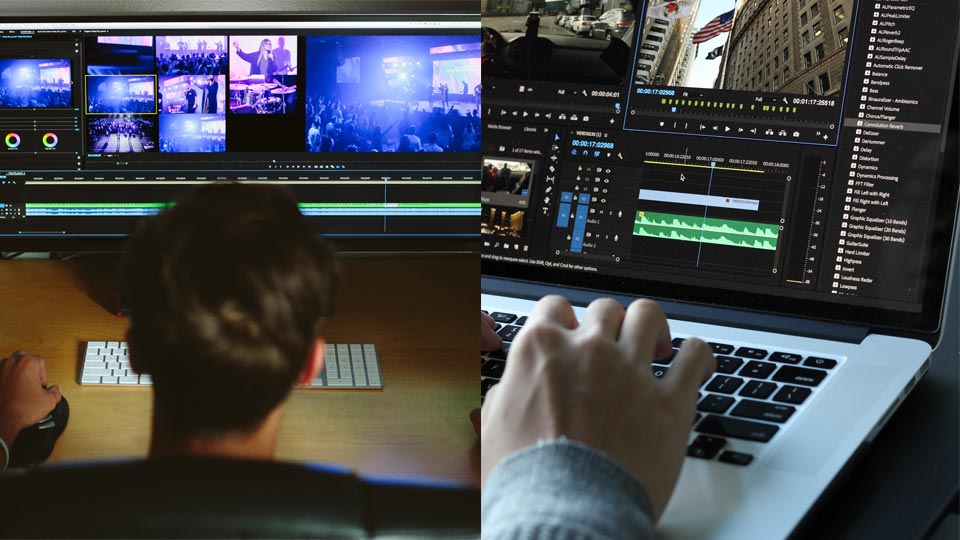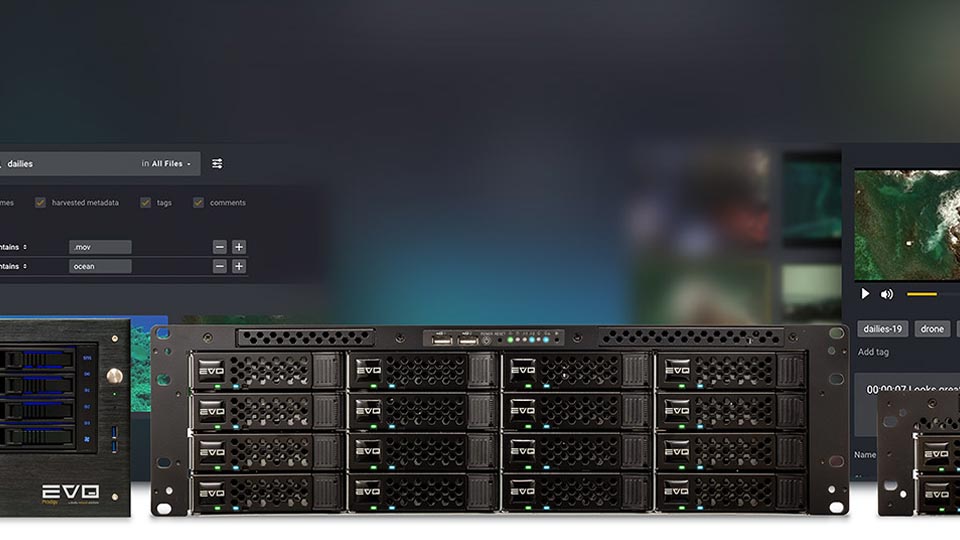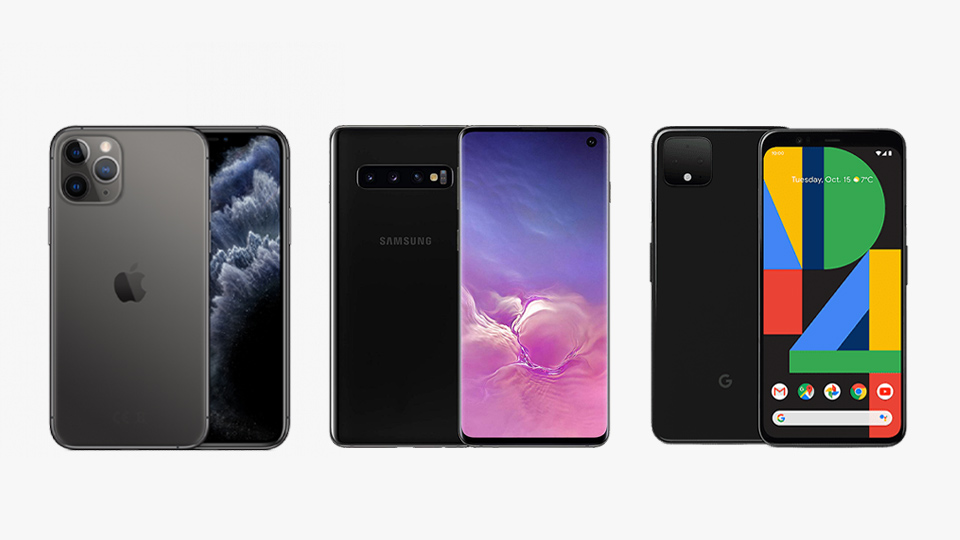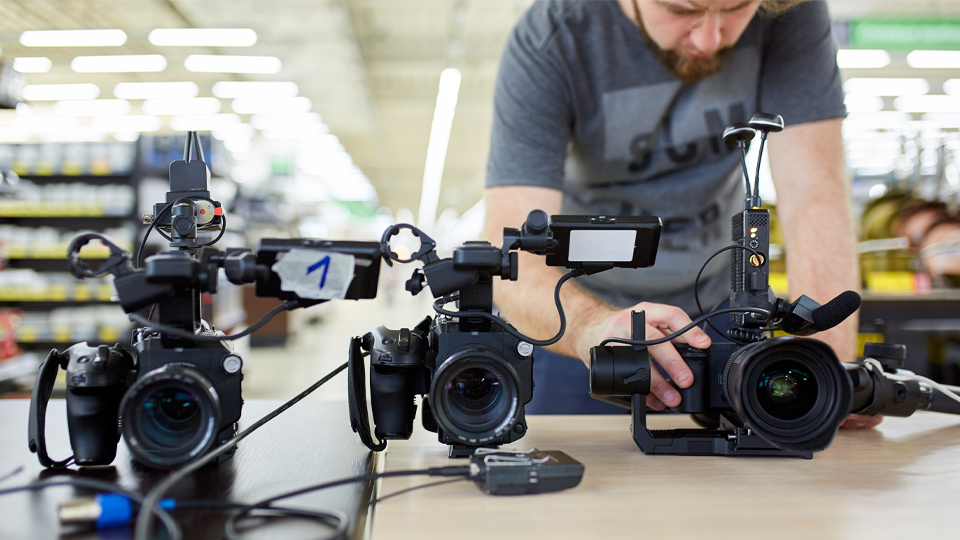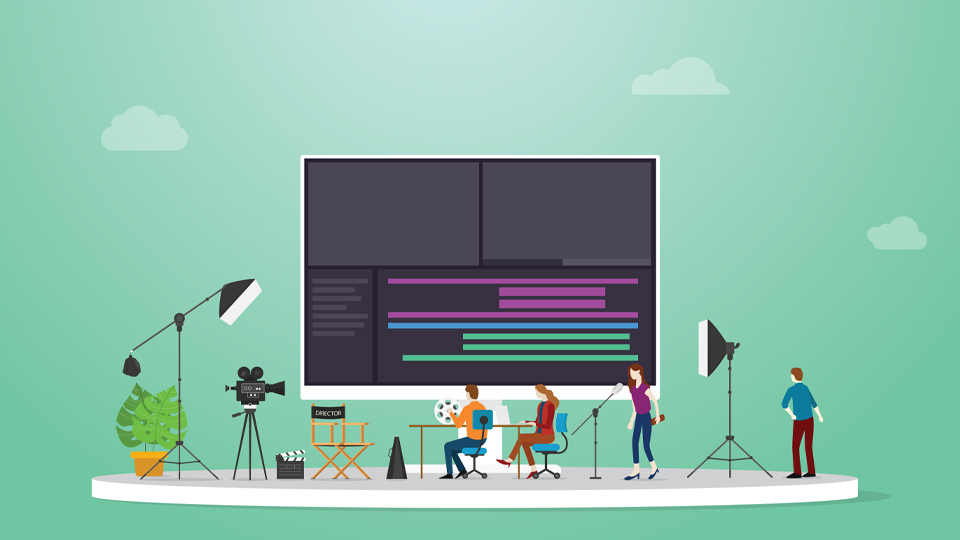
Branded Storytelling: Building Your First Creative Team
Branding today is all about storytelling. And there’s no better way to tell your story than through video. And with that, a lot of companies are realizing “Hey, I can start building my own internal creative team, I don’t always have to have an agency do my work. And if I have an internal team where they can start to know my product better, we can get more content out more cost-effectively.”
The name of the game in storytelling is not to put out one video and be all excited because that one video is out there. With social media, with things like LinkedIn, Twitter/X, Instagram, Tik Tok and more, you want to be putting out content every single day, maybe multiple times per day per platform.
That content might be video, might be photography, it might be audio, it could be a podcast, it could be a graphic, but you want to start a cadence where every single day you’re putting out content via your social feeds and your website. Especially if you’re a consumer product, your social media feeds better be full of new content daily to keep that audience coming back and staying engaged with your brand.
If you’ve never built a creative team before and you’re planning to start one, I have a few pieces of advice.
First, start with two, don’t hire one. Especially if you’re planning to include video in your social plan (and you really should). Why? Actually filming the videos can often be simple, with just a single camera or a smartphone. Especially with talking head or simply talking directly to the camera, you film dozens of videos in just a few hours. But filming is not the end of the story.
Then there’s editing, graphics, sound mixing, color enhancement, transcriptions, captions, and outputting the video in the proper frame size and format for the various services. A simple video like a 2-minute talking head could take two to three hours to complete all the post-production tasks to output it to all the social channels. Transcriptions and Captions often take some time, and you really want to include them in your videos because they raise engagement as much as 75%. Many people watch videos silently on social, so having captions there allows them to follow along.
Let’s say you shoot 20 “quick videos” today. At two to three hours each, I’m going to be able to get maybe four done on a normal day. That’s five days of work for me to take these very simple videos and get them processed and ready to go out onto all the social media feeds. Now, if there are other things that you want me to do over the next couple of days, well, that means I can’t be editing those videos. I have to be filming the new material. So now those 20 videos are going to be delayed in their delivery.
There’s a great efficiency in hiring two people right off the bat. One can be filming, one can be doing graphics and editing. They can split the duties so instead of five days, they get it done in two and a half days. When you have a one-man band, that is one person who literally does everything, it seems like it saves you money in salary, but it really cripples you in content output. With so many channels of social media giving you so many options in storytelling, you can’t really release new content across all channels with just one person. The more content you try to create with one person, the more they will just keep getting further and further behind because you want to keep telling more stories about your company. But they can’t finish the ones already filmed.
So, for maximum efficiency, especially if video is going to be an important part of your storytelling strategy, find the budget to hire two people. That will allow you to get a really good storytelling cadence going across all social and marketing channels.
Setting Up Your Creative Infrastructure
Building out an internal creative team just makes sense today. The tools are reasonably priced, what used to cost millions of dollars to get the right equipment and the right people now costs thousands of dollars. So the growing trend has been for companies large and small to bring creative teams inside. This allows them to create more content, keep it on brand, and it’s much more cost-effective. As I mentioned earlier, you should start with at least two people on your creative team. But from an infrastructure side, what are you getting yourself into? What equipment and software would you need to supply to your team?
There are so many variables that go into setting up a creative team, so for the purposes of this article, I’m going to create the smallest, bare minimum configuration to output a team of two.
Let’s start with computers. You can’t go cheap by heading down to Best Buy and picking up the cheapest laptop or the cheapest computer you can find. No, they’re going to need something a bit more substantial. Because your team will be processing video, creating animation, creating graphics, processing high-end photography and audio. If you go cheap, the computers will be a bottleneck and slow down your entire content creation process.
The cheap computer can literally take two or three hours to process something that a high-end computer or laptop can process in 10 or 15 minutes. It’s that big of a difference between machines designed for media content creation and generic internet surfing machines. Think about how much more content you can produce daily with faster computers, and that means you’re getting your content out faster.
My general rule of thumb for laptops: Get the top of the line MacBook Pro, or a Windows machine like a Dell Alienware laptop. Maximum processor and as much RAM as you can put in that thing. For a desktop computer, you can get away with an iMac outfitted with the maximum processor and again, maximum RAM. iMac Pro is even stronger, but they get very pricey in a hurry and the new Mac Pro desktop machines are very, very pricey.
On the Windows side, the HP Z series is amazing. Again, get the maximum processor you can get and as much RAM as you can afford. Some of your favorite NLEs, like Premiere Pro, can take advantage of available GPUs on your system to distribute processing load between the CPU and GPU to get better performance. There are minimum requirements that you can find out about on the internet for an NLE you are using.
The minimum system requirements for Adobe Premiere Pro
The minimum system requirements for Adobe After Effects
The minimum system requirements for Blackmagic DaVinci Resolve 15 (The guide for version 16 is not released yet)
One good computer gets a team of two started. It means only one person can do Post while the other can continue to do Production, but it at least gets them started. If you can supply a desktop and a laptop right off the bat, that’s even better, especially if you intend for your team to travel.
They’re also going to need storage. When you have multiple people working together it’s important that they have access to the same files. That’s where Network Attached Storage (NAS) comes in; this is also known as shared storage. Systems like the EVO shared storage server allow multiple artists to work on the same media and projects from the same storage location, without having to duplicate their files to each computer. My rule of thumb today, especially with the reasonable pricing available, is to get no less than eight terabytes for your team to start. This will allow them to edit videos, store photos, and hold everything they’ll need to create the content.
When it comes to cameras, there are so many options today. Some of you may not even need a “real” camera. You may be fine with the latest iPhone, Samsung, or Google Pixel because the cameras shoot video so well.
If you DO decide to stay with smartphones, you’re still going to need a good quality microphone. Most folks don’t think about this, but the audio quality is more important than the video quality. Your audience will watch bad video if the story is interesting, but they won’t tolerate bad audio. Depending on your needs, you’ll want to invest in a good quality shotgun microphone like a Shure VP-83 shotgun or perhaps a small wireless microphone kit. Wireless Bluetooth earbuds work just fine as well. The point is to make sure the microphone is near the audio source so we can hear it cleanly.
Now if you are going to invest in cameras, we have everything from the GoPro to the Mirrorless/DSLR to the full shoulder mount cinema-style cameras. You can easily spend $20,000 or more to set up a cinema-style camera. If you go with a GoPro, get the Black model as these models always have the most features. If you go with a Mirrorless/DSLR Camera (google those terms for an explanation) expect to spend in the $2,000 – $4,000 range for a good quality camera body and lens.
To give you an idea, the camera I use today is the Fuji XT3 and it’s about $1,300 for the camera body itself. I added the Fuji XF 16-55mm lens and that’s $1,200. Then I added a Battery Grip ($350) to give me longer battery life (90 minutes vs. 25 minutes) and 6 batteries ($120). Right around $3,000 for a very high-quality camera that takes superb stills and outstanding video.
And then you start getting into all the support equipment required for video and photography. Lights, tripods, C-Stands, sliders, digital audio recorders, microphones, equipment bags, additional chargers, extension cords, power strips, and assorted bits and pieces that make up a production package.
At the absolute minimum, you should be expecting to spend $15,000. You can see by the descriptions above, that will be a bare minimum rig, but you can create some really good content with that setup. If you have $20,000 – $30,000 for equipment, your team will be in an even better position as that would allow two computers so they can tag-team on post-production.
Continue reading Building Your First Creative Team – Part 2!
By Walter Biscardi Jr.
Walter Biscardi Jr. is an Executive Creative Director and a 30-year veteran of storytelling and branding for a global audience. He’s built multiple creative operations encompassing video, graphic and web design while managing teams of up to 100 people. He’s created original content for brands and networks such as Food Network, PBS, CNN, The Weather Channel and Sky News, Sesame Street, PING, The Home Depot, Georgia-Pacific, High Road Craft Ice Cream, The Carter Center and the Bill & Melinda Gates Foundation. He is a LinkedIn Learning author, writer for CreativeCow.net and on WalterBiscardi.com. He’s also the Creator of Contemporary Living Network, a lifestyle SVOD featuring quality edutainment and actionable, real-time purchasing. We call it, Life Worth Living. Credits and honors include multiple Peabody, Emmy and Telly Awards.

